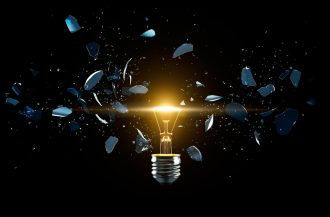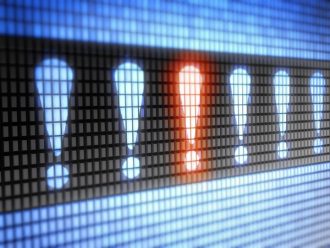
June 30, 2010
Bilski’s Claims Unpatentable Abstract Ideas; Machine-or-Transformation a Useful, Not Exclusive Test for Patentable Subject Matter
Bilski v. Kappos, No. 08-964 (S. Ct. June 28, 2010).
On June 28, 2010, the Supreme Court issued its long-awaited (oral arguments were November 9, 2009) decision in Bilski v. Kappos. The Court affirmed the rejection of Mr. Bilski’s claims, which were directed to methods of hedging against a risk of price changes for a commodity, as an unpatentable abstract idea. While doing so, the Court interpreted “process” in the patent statute as taking its “ordinary, contemporary, common meaning,” excluding only laws of nature, physical phenomena, and abstract ideas by Court precedent. The Court endorsed the Federal Circuit’s machine-or-transformation test as a useful, but not the sole, test of subject matter that may be patentable under 35 U.S.C. § 101. Finally, the Court rejected any categorical exclusion of business methods from patent-eligible subject matter.
The Court invoked 35 U.S.C. § 100(b)’s definition of “process” as “process, art or method . . .”—circular, according to Justice Stevens (concurring)—to anchor its approach on Congress’s “permissive approach to patent eligibility.” Slip op. 4-5. Because the “machine-or-transformation” test for a patentable process was not rooted in section 100(b)’s definition, or in any “ordinary, contemporary, common meaning,” it could not serve as an exclusive test for patent-eligible processes. While a late nineteenth-century case (Cochrane v. Deener) supported the test, the Court read late twentieth-century cases (Gottshalk, Flook) as treating the test as but a clue to patentable subject matter. Under an ordinary meaning, “at least some methods of doing business” may be within section 101. Slip op. at 10. The Court further relied on 35 U.S.C. § 273(a) to support its conclusion that not all business methods are outside the scope of section 101. This section defines “method,” for the purpose of enumerating a defense to infringement of a method patent, as “a method of doing or conducting business.” Reading this 1999 provision with the 1952 act’s sections 100 and 101 demonstrated Congress’s intent to encompass business methods within the ambit of section 101.
As to the more detailed Bilski claims, with specific applications to energy as the commodity, adding statistical limitations, and random analysis techniques, the Court relied on Flook for the rule that limiting an abstract idea to a certain field or adding insignificant post-solution components does not imbue an abstract idea with patentability.
The Court opinion was only a plurality due to Justice Scalia’s defection from two sections of the plurality opinion (II-B-2 arguing that the machine-or-transformation test is tied to the Industrial Age and insufficient for determining what is patentable in the Information Age (“Section 101’s terms suggest that new technologies may call for new inquiries.”) and II-C-2 asserting that business methods are not per se unpatentable but include some that are unpatentable, abstract ideas (those that “instruct how business should be conducted”)).
The Stevens concurrence (joined by Justices Ginsburg, Breyer, and Sotomayor), three times the length of the plurality’s opinion, read as though it had been intended for a majority opinion. Justice Stevens would have “restore[d] patent law to its historical and constitutional moorings,” slip op. at 1 (Stevens, J., concurring), by disallowing business method patents: “[A]lthough a process is not patent-ineligible simply because it is useful for conducting business, a claim that merely describes a method of doing business does not qualify as a ‘process’ under §101.” Id. at 2-3. The “less than pellucid” opinion of the Court jettisoned centuries of contextual meaning for “process” that tied a patentable process to technology, as in the Useful Arts. “Indeed, the [Court’s] approach would render § 101 almost comical. A process for training a dog, a series of dance steps, a method of shooting a basketball, maybe even words, stories or songs if framed as steps of typing letters or uttering sounds-all would be patent-eligible.” Id. at 13.
Justice Scalia joined Justice Breyer’s concurrence, which set out four points on which, beyond the unpatentability of Bilski’s claims, everyone could agree. First, natural phenomena, mental processes, and abstract ideas are not patentable. Second, application of the machine-or-transformation test is helpful for determining if a process is patent-eligible. Third, although useful and important, the machine-or-transformation test “has never been the ‘sole test’ for determining patentability,” slip op. at 3 (Breyer,, J., concurring). And last, “this by no means indicates that anything which produces a ‘useful, concrete, and tangible result’ is patentable,” id. (quoting with disapprobation State Street).
Note, Justice Scalia specifically declined to join that part of Justice Breyer’s concurring opinion that would have held all business methods to be outside the scope of patentable subject matter under 35 U.S.C. § 101.
We can expect from Justice Breyer’s last words that the machine-or-transformation test will be the starting point in future patentable subject matter analyses: “[I]n reemphasizing that the ‘machine-or-transformation’ test is not necessarily the sole test of patentability, the Court intends neither to deemphasize the test’s usefulness nor to suggest that many patentable processes lie beyond its reach.” Slip op. at 4 (Breyer, J., concurring).
Within hours of the Court’s decision, the Patent Office told the examiners that if a process passes the machine-or-transformation test it is likely patent-eligible, absent “a clear indication that the method is directed to an abstract idea.” If it does not, absent “a clear indication that the method is not directed to an abstract idea,” the applicant must show why it is a patent-eligible process (however that is to be done). The Court has left to the Federal Circuit the task of giving the “clear indication” some shape, and has provided a ready opportunity by remanding a pair of cases decided using the machine-or-transformation test, Classen Immunotherapies Inc. v. Biogen Idec (non-patent-eligible subject matter) and Mayo Collaborative Services v. Prometheus Laboratories Inc. (patent-eligible subject matter). Both Classen and Prometheus concern medical methods.




































